Eliza Stanley was a midwife who worked in the Bretforton and Badsey areas of Worcestershire about a hundred years ago. These articles by Trevor Hockenhull and Maureen Spinks accompany the midwife's register 1905-1917 which is fully transcribed on this website.
- Eliza Stanley (1841-1923) - biographical details
- A brief history of midwifery
- Eliza Stanley's register
Eliza Stanley (1841-1923) - biographical details
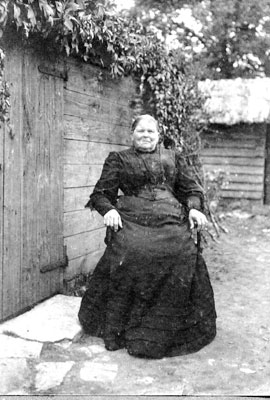
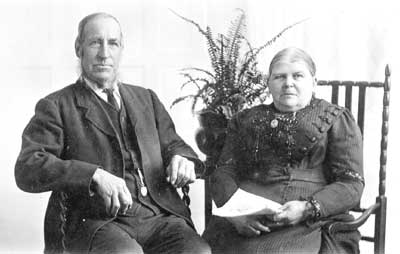
Eliza Robbins was born at Badsey in 1841, the first child of William Robbins, a labourer, and his wife, Hannah (née Knight); she was christened at St James' church on 28th November that year. In 1851, Eliza was living on Badsey Ley (in a cottage which was demolished in the 1950s, on the site of Hither Green) with her mother and father and younger siblings, Charlotte (born 1843) and Sarah Ann (born 1848). Four more sisters and two brothers followed in subsequent years.
In 1859 the young Eliza Robbins found that, aged 18, she was pregnant and, in due course her son was delivered at Badsey on 23rd March 1860, named John William Robbins. The 1861 census tells us that Eliza and her son were lodging with 37-year-old Elizabeth Wheatley, a field worker, and her children in a cottage in the High Street (this cottage, demolished in 1869, was on the site of the present-day numbers 30 & 32 High Street). Eliza's parents by this time were living at Sharps Row (on the site of today's Garden of Remembrance). Eliza's young son was not long for this world. He died in 1864 aged four and was buried in St James' churchyard on 2nd June.
Two and a half years later Eliza married Samuel Stanley at Badsey. Samuel was the third child of James and Hannah Stanley of Bretforton and had been christened there on 31st December 1843. At the time of the marriage, both the bride and groom were resident in Badsey. They made their first married home in Badsey where their first eight children were born: Alice Mary (1867), James William (1869), George (1871), Sarah Anne (1872), Samuel (1873), Hannah (1876), Emma Elizabeth (1878) and Harry (1879).
At the time of the 1871 census, which was taken on 2nd April, Eliza and Sam were living in a cottage at Badsey Leys (possibly the same one in which Eliza had spent her early childhood years). As well as their children, 15-year-old Fanny Harris and her three-year-old brother, William, were staying in the household. Fanny, who was deaf and dumb, was acting as nurse to the Stanley children. One assumes that the Stanleys were helping out Fanny and William's parents, Joseph and Joyce Harris, who were going through a tough time. Their six-year-old son, Henry, had died a week before the census at Evesham Union on 24th March 1871; Joseph Harris was lodging in Chapel Street, Evesham; Joyce was working as a servant in Bretforton; nine-year-old Joseph was working as a nurse for the New family. By 1881, the family was back together again and living in Bretforton. By then, Fanny had given birth to an illegitimate child, Charles. It is likely that Eliza may well have delivered Fanny's baby.
In 1871, Samuel Stanley was working as an agricultural labourer and Eliza as a Glover. Gloving was a cottage industry whereby factory owners actively engaged out-workers in large numbers to stitch and complete gloves in their own homes, and was a useful means for farm-worker's wives to supplement the family income. Eliza must have decided that she could do better than that and, some time between 1875 and 1880, she commenced her employment as a midwife (there are two differing start dates attributed to her commencing her work). If she started at the earlier date then she would have carried out the bulk of her early work in Badsey, as they were still living in Badsey until at least September 1879 (when their son Harry was baptized). By census night April 1881, they were living in Bretforton, Samuel's home parish. Eliza's sister, Sarah Ann Hall, had also moved to Bretforton around 1877 with her first husband, George Sollis (after his death in 1878, Sarah Ann married George Hall, living firstly at The Cross but, by 1891, living at the New Inn, Main Street, Bretforton, close to where the Stanleys later made their home). The Stanleys' address was given as The Close in 1881 and in subsequent census returns as Lower End or Main Street. They remained in Bretforton for the rest of the lives, probably living in the same house, which is believed to have been on Main Street, just to the east of the junction with Drinkwater Lane.
Eliza had three more children after the move to Bretforton: Ann (1881), Ernest (1883) and Fanny (1885). So, if she did begin midwifery as early as 1875 or 1880, she was still bearing children herself. It is likely that she began midwifery in a small way, beginning with family and neighbours. Her sister, Sarah Ann Hall, living close by, had six children by her second husband, so was most likely attended to by Eliza, as were the other siblings, who mainly still lived in Badsey. In 1891, Eliza was offering assistance to her neighbour, David Autie. David Autie had lost his wife in 1889, shortly after his youngest child, Alice, had been born. Baby Alice was staying with the Stanleys whilst nine-year-old Ann Stanley had been sent next door to help look after David's other children. It is probable that Eliza had acted as midwife to Harriet Autie; she certainly delivered some of David's grandchildren in later years.
All of Eliza's 11 children married and remained living in either Bretforton or Badsey. In all, Eliza had some 54 grandchildren, and it is likely that she delivered all of them. Most of her children lived close by, so Eliza would not have had far to go on her nursing visits. By 1911, four of the children were living at Victoria Terrace which had been built in 1898: Alice Hall who had seven children, George Stanley who had ten children, Hannah Archer who had one child and Ann Carter who had one child. Eliza's son, Sam, lived in a cottage close to his mother in Main Street; he had seven children. Sarah Anne Halford was living next-door to her mother by 1911; she had nine children. Harry Stanley lived a bit further down Main Street and had five children. Over in Badsey, Emma Elizabeth Knight had three children, Ernest Stanley had three children and Fanny Mustoe had eight children.
By the time of the 1901 census, Samuel was described as a Market Gardener and working on his own account. His sons Harry and Ernest were also described as Market gardeners, who were "employed", presumably by their father. Eliza, her age given as 59, had no occupation noted, and three of her children at home. By now, she had her unmarried brother, William, staying there; in one census return, 1871, he had been described as an "imbecile", but not in any of the others, but it is likely he may have had some learning difficulties. Also there was Eliza's 12-year-old niece, Rosa Robbins, the daughter of her brother George (George's wife had died in 1896; he now had a new partner and children, so the children of his first marriage were living in separate places, Charlotte being with Eliza's sister, Sarah Ann, at the New Inn, Bretforton, Alice staying with her Clarke grandparents and their older brother Charles working in Towcester, Northamptonshire).
As a result of the Midwives' Act of 1902, Eliza, by now in her sixties, was required to register with The Central Midwives' Board if she wished to continue her function of village midwife. She would have been able to apply for registration having carried out the role for many years. She received her certification, her rules and instructions and her "Register of Cases", in which she began recording all the births she attended from May 1905 until her retirement in 1917. A letter dated December 1912 exists which shows that Eliza had to complete a form, Form VIII, stating her intention to continue practising as a midwife. The letter was from G H Fosbroke, the County Medical Officer. Whether this was an annual requirement or whether Eliza was contacted because she was by now 71 years of age is not known. Eliza must have completed the form, as she continued practising for another four and a half years.
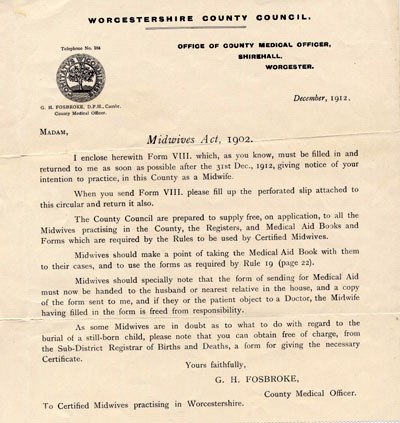
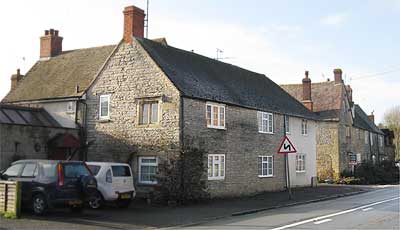
Eliza's last client was Mrs Annie Harris of Bretforton, whose baby, Richard Eric, was delivered on 27th June 1917. Eliza had known the Harris family since her early days in Badsey and so it was a fitting case to end with. Baby Richard's grandmother was deaf and dumb Fanny, who had acted as nursemaid to Eliza's own children some 46 years previously.
Just over a month after Eliza retired, her husband, Samuel, died, aged 73. Possibly he had been ill before his death which may have influenced Eliza's decision to retire, though a note written of the flyleaf of the register says "she had to give it up owing to old age". Eliza survived Samuel by nearly six years, dying at Bretforton in July 1923.
Trevor Hockenhull, with additional notes by Maureen Spinks, February 2010
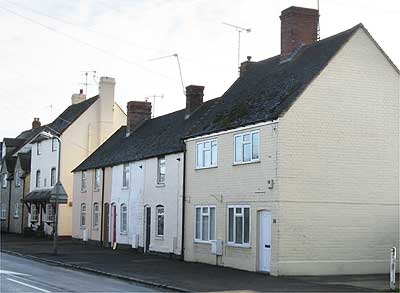
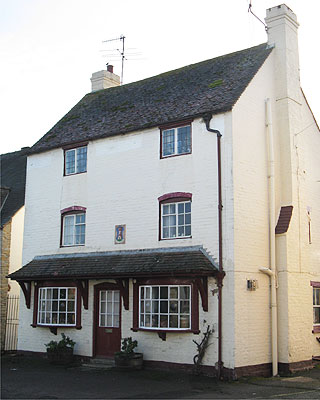
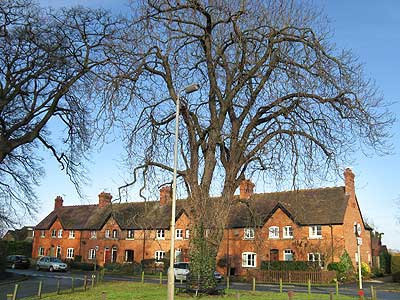
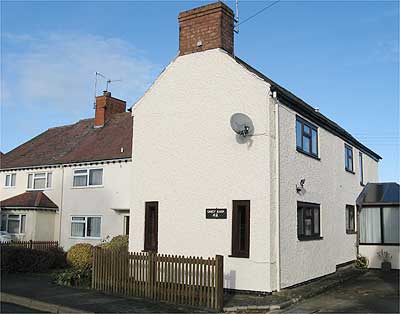
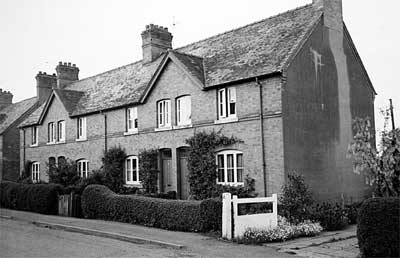
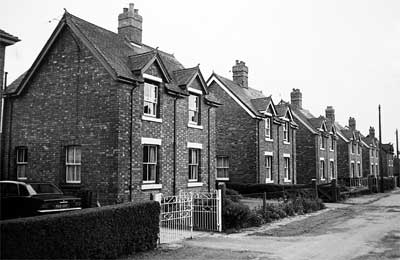
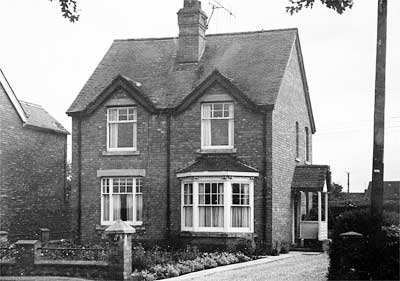
A Brief History of Midwifery
Midwifery was traditionally a female occupation. The conventional history of midwifery presents a story of women midwives, skilled, well-respected, economically successful and employed by all classes in the population. Childbirth in the 19th century was both difficult and dangerous. Maternal mortality stood at around 500 per 100,000 births compared with approximately 12 per 100,000 today. Few women had access to trained attendants in childbirth and many of the poor had to depend on local untrained midwives.
There are references to midwives in the Old Testament (Genesis 24). In Egypt, midwives jealously guarded the secrets of their profession, therefore very little of practical value was handed down in writing. In Ancient Greece, midwives were required by law to have had children themselves. In the 1500s, "The Sloan Manuscript No 2463" was one of the earliest works on midwifery; Echarius Roesslin (of Frankfurt) published "Rosegarten" a guide for midwives and physicians. Childbirth was viewed as one of the "diseases of women".
One of the first schools for midwives was in the early 16th century at the Hotel-Dieu, Paris. The first woman to write a text on midwifery was Louise Bourgeois (1563-1636). She was the wife of an army surgeon. In 1720 Maubray gave criteria for requirements of a midwife: not fat, considerate, grave, patient, pleasant and follows advice. And Edmund Chapman (1680-1756), the second public teacher (after Maubray), wrote: " ... one of the most noble ... operations ... requires judgment for there is generally one and often two lives snatched from the jaws of death ..."
In 1732, William Giffard, a surgeon and man-midwife, published "Cases of Midwifery", which gave accounts of practical experiences, including the use of forceps. There were also district advances around this time. In 1735, William Smellie (1698-1763) was believed to be the single individual with the most profound effect on midwifery. Around 1735 he recorded the use of forceps in France. The year 1742 saw Smellie became an instructor of midwifery. He had many works on midwifery published.
Sir Richard Manningham (1690-1759) in 1752 established a General Lying-in Hospital and later, Queen Charlotte's Hospital. Previously he had supplied beds in a rented house next door to his own house; he taught midwifery skills by using a manikin.
During the 18th century, midwifery became respectable as a profession for men, due to William Hunter (1718-83). Before the end of the 18th century there were six or seven maternity hospitals as well as maternity wards attached to General hospitals. And up to this time, midwives were usually selected and controlled by the parish vicar. The Reverend Mr Dolling, Vicar of Aldenham, Hertfordshire, in his vestry book, dated 6th August 1797, wrote: "Fifteen years ago, there being then no midwife living in the parish of Aldenham, I selected a poor widow, who had three children supported by the parish, and sent her up for instruction to the Lying-in Hospital in Store Street, near Tottenham Court Road, where Dr Osborn permitted her to continue for three months, at a very small expense. Though without any preparatory education, she returned so well instructed as to exercise her calling in the parish ever since, without a single accident, or ever having occasion to call in medical assistance. She has been enabled thereby to support herself and her children comfortably and is now living, in the enjoyment of the confidence due to her skill. She attends all the day-labourers' wives, at the stipulated sum of half-a-crown. The expense of her instruction and setting-up was collected in the parish by subscription; part of which paid for her board in the hospital, and the rest of the money was applied for her journey and incidental expenses. She has been the cause of a considerable saving in the medical bills of the parish, besides being a very great comfort and relief to the poor."
The history of midwifery has been a long struggle between firstly, a male-dominated priesthood and subsequently, a system of organised medicine also controlled by men, and a women's community-based network of helping and healing. In the 19th century, the rising middle classes came to prefer obstetric care to the traditional care from midwives. Right through the century, however, the poor had recourse to midwifery amongst the working class. There was a resistance to attempt to organise midwifery and make it a profession in case it affected the lucrative middle class doctor's practices. Augustus Granville, founder of the Obstetrical Society of London, said that women were "unsuited by nature for all scientific mechanical employment".
In the 1840s, several medical schools and colleges added midwifery to the curriculum and, in the 1850s, the Royal College of Physicians and Surgeons awarded diplomas in midwifery for the first time. Many obstetricians believed they would never receive rightful status and many were still untrained. In 1862, Nightingale Ward at King's College Hospital opened to train nurses in midwifery.
It was also in 1881 that the forerunner of the Royal College of Midwives, the Matron's Aid or Trained Midwives' Registration Society, was created. Zepherina Veitch, a midwife who had worked with the poor in London, together with a number of her colleagues, established the Society and aimed to "raise the efficiency and improve the status of midwives and to petition parliament for their recognition". The Society later changed its name to "The Midwives' Institute". It started a long campaign to petition parliament for the regulation of midwives and midwifery. In this campaign, they faced much opposition from doctors who saw their livelihood being threatened by the wider availability of well-trained and affordable midwives.
In 1902, the Institute's efforts were successful with the passing of the first Midwives' Act for England and Wales. This established the Central Midwives' Board, which governed the training and practice of midwives and made it illegal for any unqualified person to act as a midwife. It also established supervision of Midwives, a process which continues to this day with the aim of ensuring the highest possible quality of midwifery care and ensuring public protection. Parts of the Midwives' Act 1902, which Parliament passed on 31st July 1902, did not become fully effective until 1st April 1905.
The Central Midwives' Board was set up by this Act. Its jurisdiction extended over England and Wales. The Board's main function was to set up a Roll of certified midwives, to secure better training and to regulate their practice. Under section 2 of the act, a midwife could be admitted to the Roll of Midwives if she held a certificate in midwifery from institutions approved by the Board. The Board also had powers to admit to the Roll women who had already been in bona fide practice for at least a year at the time of passing the act, provided they were of good character, and to remove midwives from the Roll whose conduct was not in accordance with its rules. The act also decreed that all details of births were to be collected in registers produced for the purpose.
It was thus, in this climate, that Eliza Stanley of Bretforton, who had been practicing as a midwife in Bretforton and Badsey since about 1880, had to register as a midwife and begin to keep records of all the births she attended.
Trevor Hockenhull, February 2010
Eliza Stanley's register
We are extremely grateful to Trevor Hockenhull for extracting information from an early 20th century Midwife's Register which was kept by Eliza Stanley. The register belongs to Barbara Bennett (great-granddaughter of Eliza Stanley) who showed it to Trevor as she knew he would find it of interest. Trevor immediately recognised the importance of this register as it lists the births of 210 babies born in Badsey and Bretforton between 1905 and 1917.
The Midwives' Act of 1902, which came into effect on 1st April 1905, made it a requirement that all births had to be recorded in a register. It was also a requirement that anyone practising as a midwife had to apply to the Central Midwives' Board for registration, as it was now illegal for any unqualified person to act as a midwife. Eliza, who had had so many confinements herself and had been acting as midwife for her own daughters and daughters-in-law (Eliza had well over 50 grandchildren), nieces and neighbours for many years, had to apply for registration when she was by then in her sixties. The register is a standard pre-printed volume produced by the Central Midwives' Board, measuring 13 x 8 inches, with 48 double-sided pages and ten rows per page. These pages are divided into 16 columns, of differing widths, with the following headings:
- Number (in register)
- Date of engagement to attend
- Name and address
- No of previous Labours and Miscarriages
- Age
- Date and Hour of Midwife's arrival
- Presentation (Born)
- Duration of 1st, 2nd, 3rd Stage of Labour
- Complications (if any) during or after Labour
- Sex of Infant.
- Born Living or Dead
- Full time or Premature
- No. of Months
- If Doctor called, Name of Doctor
- Date of Midwife's last Visit
- Condition of Mother
- Condition of Child
- Remarks
Not all of these columns were used, and some that Eliza used at the beginning soon fell from use. The first entry was dated 14th May 1905 and the last entry was on 27th June 1917. There is evidence that Eliza did not always write up the register immediately, as the entries are not always in exact date order. On seven occasions she wrote down the sex of a child which other records (baptism register, census return, etc) has shown to be incorrect. Eliza was 75 when she retired. For the last few years of practice, she was recording less information in the register, for example omitting the age of the mother, the hour of midwife's arrival and whether or not the baby was full term. Nevertheless, the book is a remarkable record and adds to our picture of life in early 20th century Badsey and Bretforton.
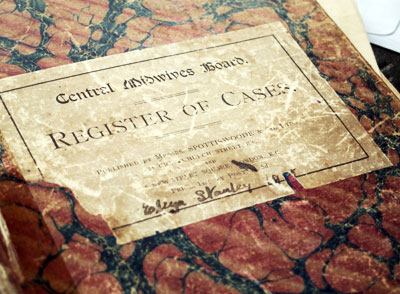
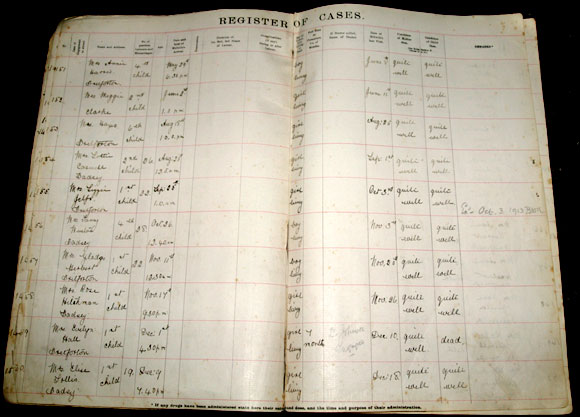
During the 12-year duration of the register's duration, Eliza delivered 210 babies. This comprised 95 girls and 115 boys (historically there has always been more boys born than girls). In 1905 there were 16 births; 1906, 20 births; 1907, 17 births; 1908, 18 births; 1909, 19 births; 1910, 13 births; 1911, 18 births; 1912, 22 births; 1913, 18 births; 1914, 16 births; 1915, 11 births; 1916, 17 births; and in 1917 there were only 5 deliveries. Although the majority were in Bretforton, 37 were in Badsey. Two of the Badsey confinements were her daughters, Emma Elizabeth (Lizzie) Knight and Fanny Mustoe. Lizzie had three children and Fanny had eight; the last three of Fanny's children were not delivered by Eliza as they were born after she had stopped practising (this included Patricia, the grandmother of Barbara who now owns the register). Then there was her daughter-in-law, Ellen Stanley (née Sears), plus an assortment of nieces and great-nieces. One great-niece was Lottie Caswell, the grandmother of Badsey's blacksmith, David Caswell. In addition to the relatives, several families who lived on Bretforton Road, Badsey, chose to engage the services of Eliza such as the Olsson family who lived at Claybrook.
A perusal of the register shows many things and, despite the writings on the flyleaf (which says that "she never lost a mother or child"), seven of the babies were born dead. Four babies who had been born alive had died by the time of Eliza's last visit and one was "poorly" (young John Hall, the 13th child of Mary Hall of Bretforton, died three weeks later). There were two sets of twins, one of them, a girl, being in the number of dead babies. In the UK as a whole, infant mortality was falling rapidly in the first decades of the 20th century. From 1900 to 1930, the number of deaths per thousand fell from 140 to 63 (compared with the present-day, where there were 4.85 infant deaths per thousand births in 2009). Eliza was thus working well within the standards of the time. The register does not indicate the death of a mother but shows one as being poorly. This was Mrs Kate Sollis (the wife of Eliza's nephew), who gave birth to a stillborn daughter. Eliza called a doctor on ten occasions.
What the register does NOT tell us is the name of the child. Using a little bit of detective work, however, by consulting the baptism registers, the 1911 census and looking at the birth registration index on the Ancestry website, we have been able to work out the names of the children who were delivered by Eliza. Entry No 175 says that 19-year-old Kate Witts (Eliza's great-niece) gave birth to a living boy in April 1915. The condition of the mother was "quite well" but the condition of the baby was "dead" on Eliza's last visit. The Badsey baptism register reveals that the baby, Leonard, was baptised the day of his birth, the note in the register saying, "Ceremony performed by E Stanley, midwife".
Eliza was called to confinements at all times of the day and night. A study of the register reveals that, of the 276 confinements where the time of the midwife's arrival was recorded, there was a spread of times throughout the day: 44 between the hours of midnight and 6 am, 48 in the morning up to midday, 46 in the afternoon up to 6 pm and 38 in the evening up to midnight. Six o'clock in the evening was the commonest time for Eliza to arrive, which happened on 13 occasions. This stacks up with worldwide statistics which show that every hour of the day a baby is born and that fewest births are between 10 am and noon; 10 am and 11 am were among the least frequent times for Eliza to arrive. Eliza turned out in all months of the year, though there were more babies born in the summer months than the winter months. This doesn't mean that Eliza was shunning winter pregnancies. Various sources on the internet seem to suggest that August and September are the commonest months for babies to be born, with other warm months being close behind and that child births are least common in the winter during the months December through to February. The Badsey Council School Log Book reveals that January 1912 was a month beset by much heavy snow. Fortunately Eliza had no clients during the very bad weather and, by the time her daughter, Fanny Mustoe, was due to give birth to her third child, Lilian Mary, on 1st February, the weather had improved. Fanny and her husband, Ernest ("Buster"), lived then at The Orchards, Bretforton Road (present-day No 12), nearly a mile and a half distant from Eliza's house. Eliza arrived at the Mustoes' home at 1.30 in the morning and duly delivered the baby girl, requiring no assistance from a doctor.
Was Eliza the only midwife operating in Bretforton at that time? A comparison with the Bretforton Baptism Register for the period of the register reveals that, whilst the majority were delivered by Eliza, not all babies baptised during that period were. Discounting the parents who lived outside the parish and those whose social status meant that they probably engaged a doctor for confinement (for example, the Ashwin, Gaukroger and Johns families), there were around 27% of families whose babies do not appear to have been delivered by Eliza. This may have been because Eliza omitted to enter the confinement in the register, or because the families were too poor to engage the services of a midwife, or perhaps because they were newcomers to the village. Whatever the reason, it does seem that for the deliveries she did perform, Eliza was the main person acting as midwife in Bretforton and parts of Badsey for many years.
In the period 1905-1917 (when Eliza was recording her deliveries), life expectancy in the UK rose from 48 years to 51 for males and from 51 years to 56 years for females (compared with the 2009 figure of 77.4 for men and 81.6 for women). It is unlikely that many (if any) of the babies delivered by Eliza are still alive today as they would be well into their nineties, but it may well be that someone reading this article has a father, mother or grandparent featuring in the register. To date, the only known direct descendant of one of the babies is Badsey Society member, Graham Allen, whose father, Edwin Frederick, was born at Bretforton on 30th December 1915 and died at Badsey in December 2001 aged 85. Eliza had ceased recording the time of her arrival by this time, but she did not have far to go as the Allens lived close by on Main Street. If your forebear was one of Eliza's "babies", we would love to hear from you.
Trevor Hockenhull and Maureen Spinks, February 2010
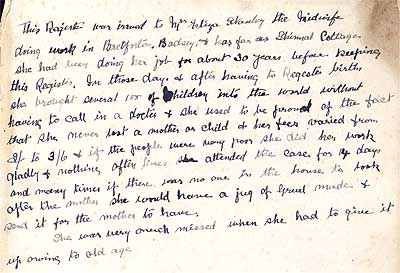
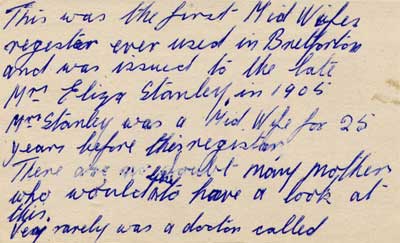

Here is the transcription of Eliza Stanley's midwife's register 1905-1917.
There were some other midwives working in the area at the same time as these advertisements from the parish magazine show.
